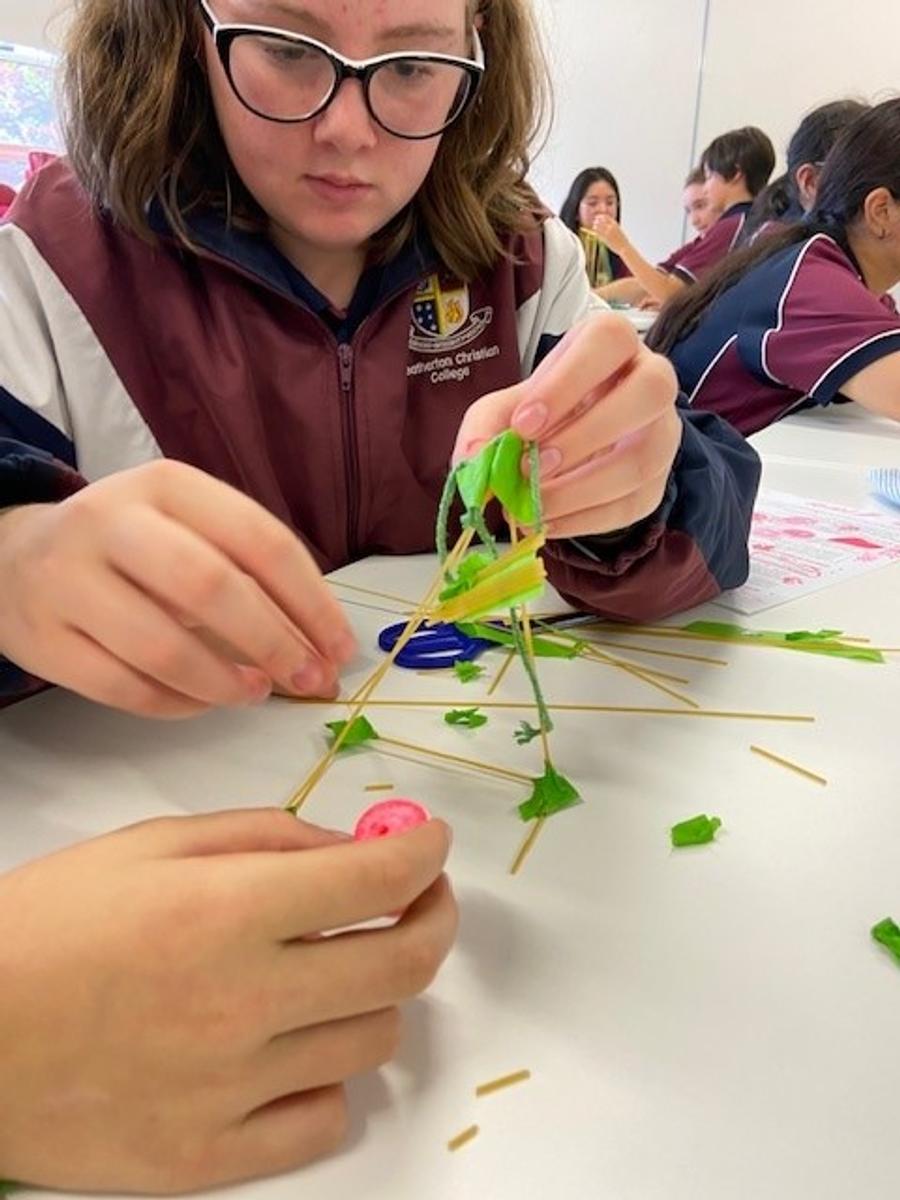Entrepreneurial Thinking at HCC
Why do we do the marshmallow challenge?

Entrepreneurial Thinking at HCC
Why do we do the marshmallow challenge?
Have you ever done the marshmallow challenge? The Year 7s and 8s were set the challenge this week in their E-School session.
The materials provided to groups are simple: 20 sticks of spaghetti, 1 metre of tape, 1 metre of string and 1 marshmallow. And the task: to build a sturdy, freestanding structure with the marshmallow on top, in 15 minutes.




The major purpose of the challenge is team collaboration. We learn to work in teams as soon as we begin pre-school highlighting just how important it is. No matter where we are in the course of our lives, teamwork is a prevalent skill we must embrace.
What future employability skills can we take away from the challenge?
1. Collaborate
Teamwork and collaboration are key entrepreneurial skills. Teams do better if they can use each member's strengths for the group's goal.
2. Prototype
Entrepreneurs make many prototypes and improve on them as they gather more information. This repetitive process of making and revising prototypes is called iteration. Entrepreneurs learn something from each new prototype (or "iteration") to ultimately make something better than their original designs.
3. Iterate
Entrepreneurs start making as soon as possible. When you start creating earlier, you identify problems sooner rather than later! Sometimes people plan for a long time because they are afraid of making mistakes so they try to get the perfect plan or design. Entrepreneurs know that in the early stages, they are bound to make a lot of mistakes, but will learn important things from their mistakes. Detailed planning often comes later in a project.
4. Testing
Entrepreneurs test early. Successful groups in the challenge likely tested to see if the tower could hold the marshmallow at some point before the end of the activity. If the tower could not hold the marshmallow students observed what happened and gain valuable feedback so they can adapt and improve. Entrepreneurs use what is called a design-thinking approach to developing products and services. When entrepreneurs use design-thinking, they consider solutions to problems and match what they can make with what their customers need. In the marshmallow challenge, those with an entrepreneurial mindset probably focused on making sure the tower met the specifications: tall and able to hold the marshmallow.
5. Learning from Failure
Entrepreneurs expect to make mistakes and get things wrong (especially at the beginning of something new). Entrepreneurs are resilient in the face of failure. They show determination and grit to overcome challenges. They stay optimistic about their work and try to solve problems creatively.
Entrepreneurs see failure as an opportunity to learn. They learn from many small failures and adapt and improve. This leads to better products and a greater likelihood of success in the end.
Christina Douglas
E-School/Careers Coordinator